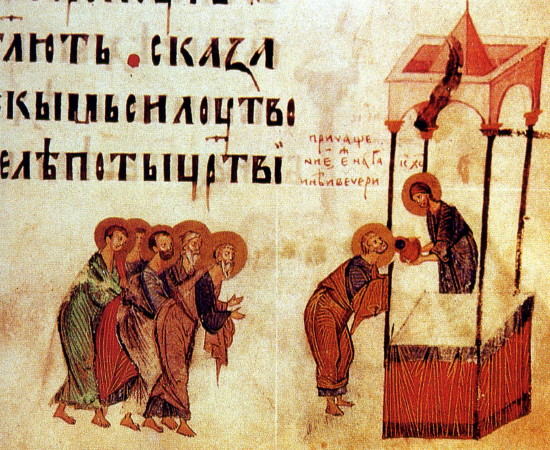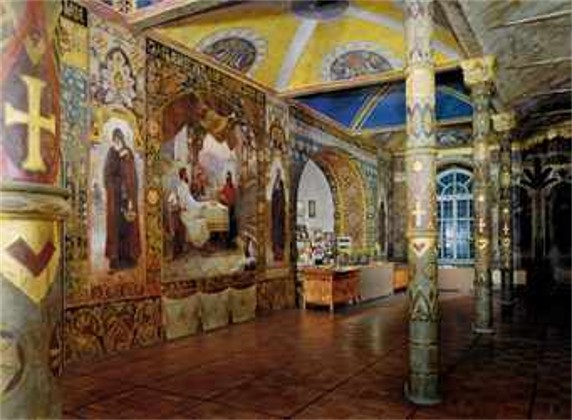Kyivan Cave Monastery Icon Painting and Art Studio
Kyivan Cave Monastery Icon Painting and Art Studio (Лаврська іконописна та малярська майстерня; Lavrska ikonopysna ta maliarska maisternia). Main centre of Ukrainian icon painting for many centuries. Its founding at the Kyivan Cave Monastery at the end of the 11th century was connected with the painting (1083–9) of the Dormition Cathedral of the Kyivan Cave Monastery by Greek masters and the Kyivan artists Master Olimpii and Deacon Hryhorii. The studio developed a distinctive style that is evident in its frescoes, icons, and book illuminations, including the Kyiv Psalter of 1397. From the late 16th century, collections of prints by western and local artists and of student drawings were kept for educational purposes. A major art school emerged at the monastery in the 17th century. It moved away from the Byzantine tradition of icon painting and adopted Western styles. Under the influence of master Oleksander Tarasevych, invited to the school by Hetman Ivan Mazepa and Metropolitan Varlaam Yasynsky, book engraving was given a prominent place in the school’s curriculum. In the 18th century the studio was supervised by Ivan Maksymovych (1724–30), Teoktyst Pavlovsky (1730–44), Alimpii Halyk (1744–55), B. Frederice (1755–?), and Zakharii Holubovsky (1763–?). Its finest masterpieces of the 18th century are the mural paintings of the Dormition Cathedral (1724–31) and the Trinity Church (1734–44) above the Main Gate of the Kyivan Cave Monastery, which were done by Ivan Maksymovych, Teokyst Pavlovsky, Zakharii Holubovsky, and Alimpii Halyk. At one time, over 40 masters taught several hundred students (mainly from Ukraine, but also from the Balkan countries and Moldavia) at the studio. Many noted icon painters and engravers were trained at the studio. In 1763 the methods of teaching at the art school were modernized in accordance with Western educational models. However, towards the end of the 18th century the studio began to gradually lose its importance in the development of Ukrainian art. From 1860 it was under the leadership of portraitist Opanas Rokachevsky. In 1883 the construction of the building for the studio was completed on the grounds of the lavra. In the early 20th century, during the painting of the All-Saints Church at the monastery, Ivan Izhakevych attempted to raise the artistic standard of the studio. The studio declined under Soviet rule and only an icon restoration workshop was active as part of the Kyivan Cave Historical-Cultural Preserve. Destroyed during the Second World War, the building of the studio was rebuilt by the Union of Artists of Ukraine in 1953–54 and was used for studios for individual Soviet Ukrainian artists. The Kyivan Cave Monastery Icon Painting and Art Studio was revived in 1988 after the Kyivan Cave Monastery was reinstated. In 2000 the Ivan Izhakevych Lavra Art Workshops were established there, in part with the aim of continuing and developing the Kyivan icon painting traditions.
BIBLIOGRAPHY
Zholtovs’kyi, P. Maliunky Kyievo-Lavrs’koï ikonopysnoï maisterni (Kyiv 1982)
Marko Robert Stech
[This article was updated in 2021.]
.jpg)

 (1730-40).jpg)
.jpg)
 (1730-40).jpg)
 (1730-40).jpg)
 (1730-40).jpg)
